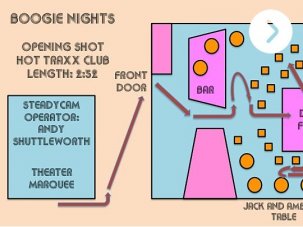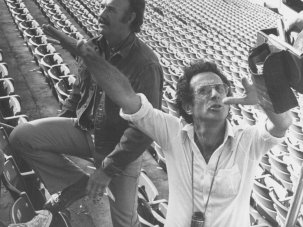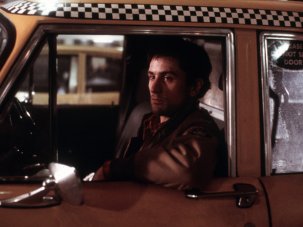from our February 2015 issue

Inherent Vice (2014)
Like many American filmmakers of a certain age and possessed of a certain degree of artistic ambition, Paul Thomas Anderson has always had a thing about the 70s. This doesn’t necessarily reflect itself in a literal way: of Anderson’s seven completed features, four are period pieces, and Inherent Vice, based on Thomas Pynchon’s 2009 novel of the same name, is only his second to take place (for the most part) in that decade, after 1997’s Boogie Nights.
USA 2014
Certificate 15 148m 35s
Director Paul Thomas Anderson
Cast
Larry ‘Doc’ Sportello Joaquin Phoenix
Lieutenant Detective Christian F. ‘Bigfoot’ Bjornsen Josh Brolin
Coy Harlingen Owen Wilson
Shasta Fay Hepworth Katherine Waterston
Deputy District Attorney Penny Kimball Reese Witherspoon
Sauncho Smilax, Esq. Benicio del Toro
Hope Harlingen Jena Malone
Sortilège Joanna Newsom
Dolby Digital/Datasat
In Colour
[1.85:1]
Part-subtitled
UK release date 30 January 2015
Distributor Warner Bros. Pictures International (UK)
► Trailer
The 70s, and the New American Cinema, hold a looming place as the Great Heroic Time; for younger American directors, I suspect the indie boom of the early 90s occupies a similar position. The critic Kent Jones has addressed the evolution of the 70s-as-aesthetic, memorably referring to Little Odessa, by Anderson contemporary James Gray, as “the result of someone being locked in a room with The King of Marvin Gardens on repeat”. Anderson, for his part, was once earmarked as the next Altman, and has taken up the obligation that this implies to always be addressing the zeitgeist.
Like Boogie Nights, which followed Dirk Diggler from the blissy self-discovery of being a 70s teenager to the coke-dick hangover of the 80s, the events of Inherent Vice vibrate with the shockwaves of a definable cultural shift. The film is set in 1970, the year of Anderson’s birth. Its protagonist, private eye ‘Doc’ Sportello (Joaquin Phoenix), hasn’t got the memo that the counterculture thing is over: he still wears his hair long, his sideburns smother his face like an invasive climbing plant and he conducts his investigations between tokes. He is despised in a collegial way as “hippie scum” by Christian ‘Bigfoot’ Bjornsen (Josh Brolin), his principal contact inside the LAPD. As far as the rest of the police force is concerned, Doc is possibly a fugitive member of the Family – the name ‘Manson’ is dropped more than once, in spooked tones.

Inherent Vice (2014)
Dream-is-over requiems such as The Long Goodbye (1973) and Shampoo (1975) are the obvious cinematic points of comparison for Inherent Vice, though it put me in mind more of one of Peter Jackson’s Hobbit movies. It has an expansive runtime, is more devoted to anecdote than incident, and every scene is cluttered with world-building details: this is film as inhabitable environment, irresistible to fans who can never have enough and, I suspect, infuriating to most others. Or maybe Inherent Vice won’t play to the base. I haven’t yet managed to appreciate Anderson’s recent films – There Will Be Blood (2007) and The Master (2012) – which, for some, were confirmations of a genius attaining the height of his powers, but I was taken with the experience of Inherent Vice more than I have been with any film of Anderson’s since Boogie Nights.
As ever, Anderson is over-fond of the blindsiding gesture: instead of frog storms or bowling-alley homicides, we get Bigfoot mournfully scarfing down the contents of an ashtray and gaining “stoner’s ESP”, and Doc performing cartoonish gape-mouthed mugging when presented with the picture of a druggie couple’s screwed-up kid. Here the case of Gray, who also directed Phoenix this year (in The Immigrant), provides an interesting study in contrasts: Gray is the classicist, for whom keeping an audience aware of cause and effect is a matter of accumulating ballast that will add weight to final emotional impact, while Anderson pinballs between disparate moods and styles, leaving it to us to make connections, or not. Allowing that neither approach is inherently superior to the other, Anderson’s spontaneity has often seemed strained to this viewer, his weirdness over-deliberate.

Inherent Vice (2014)
Like Anderson’s last two films, Inherent Vice sets out to distil the particular essence of a swathe of American history for the screen, but he has broken from the diptych model of those works, in which two characters and performances, full of iconic-historical implications, are placed in confrontation. There is something of this in the furry-freak/crewcut-square counterpoising of Phoenix and Brolin, but they’re only two big pieces in the crazy-quilt cast – the thing Inherent Vice has going is its sense of always plucking at the fringe, the conviction that the central characters aren’t necessarily the most interesting ones.
Memorable supporting work comes from Martin Short as a Mad Hatter dentist wrapped up in a drug ring; Owen Wilson as a presumed-dead sax player who re-emerges as a government spook; and Katherine Waterston as Doc’s ex Shasta, who sets the over-elaborate, groaning mechanism of a plot in motion in the first place. The movie has scenes that stick to the brainpan, both pungent and poignant; of the latter I’ll single out Doc’s reminiscence of plashing barefoot along a sidewalk in downtown Los Angeles with Shasta to the tune of Neil Young’s Journey Through the Past, next to a vacant lot that, when next we see it, is occupied by an ominous-looking corporate HQ. Anderson’s champions insist that his movies demand multiple viewings, and such exquisitely textured moments as this actually make the process seem alluring.
In the February 2015 issue of Sight & Sound

Cover feature: Strange daze
Paul Thomas Anderson’s Inherent Vice, a freewheeling adaptation of Thomas Pynchon’s picaresque novel, sees Joaquin Phoenix play a stoner detective against the backdrop of a Californian hippie culture soured in the wake of the Manson killing. He talks to Jonathan Romney.
-
Sight & Sound: the February 2015 issue

Dropping out with Paul Thomas Anderson, and the best of the awards season’s new American movies. Plus Mike Nichols remembered, modern masters...
-
The Digital Edition and Archive quick link
Log in here to your digital edition and archive subscription, take a look at the packages on offer and buy a subscription.














